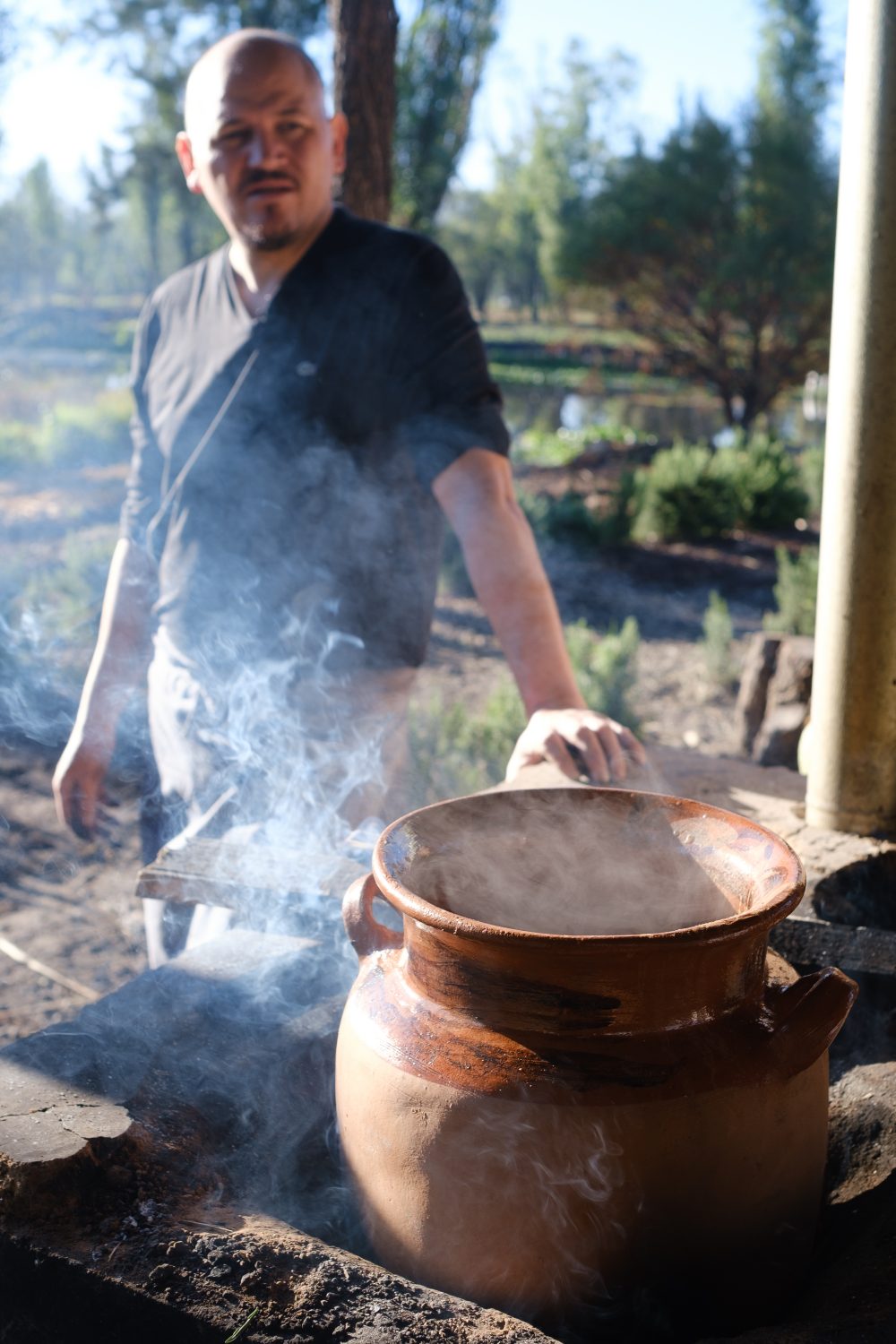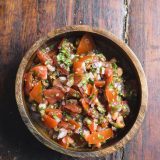It is cool and a thick mist rises off the chocolate-brown water as we motor up an Aztec canal, a narrow lane between chinampas, the floating islands that were built over 500 years ago in what was a shallow volcanic lake. Here, in the district of Mexico City called Xochimilco, the Aztecs staked walls of reeds and filled the enclosed areas with dirt, transforming the lake for agriculture.
On our 40-foot barge, I look across at Eduardo García, who had been introduced to me by Washington Post food editor Joe Yonan. Yonan, who recently wrote a book about beans, recounted a visit to García’s Mexico City restaurant Máximo Bistrot, where he had been delighted to find a bowl of beans, simply cooked, that trumped the fancier offerings on the menu. I immediately contacted García, and we met before sunrise at the canal for a trip to the chinampas that he uses for a farm-to-table redoubt.
For anyone who grew up in New England, beans are used mainly in three-bean salad, navy bean soup and baked beans soused with molasses. I knew, of course, about the black beans used in Mexican cooking—smeared over a tortilla on top of brown lard or on the roll underneath the cheese in a breakfast mollete—but a plain pot of beans was something else. And it all starts with the beans.
García uses beans that are just six months old, a local variety of pinto that is particularly meaty. And “meaty” is key here. These beans have great flavor, essential to such a simple dish. (He also makes a variation by cooking a pork shoulder and then using the resulting broth to cook the beans, shredding the pork and adding it back to the beans to finish.) Many cooks may argue about soaking beans, but García soaks his for 24 hours. Here at Milk Street, we agree—soaking makes beans creamy and plump.
The scraggly treetops glow in the sunrise. Pelicans glide just above the surface of the water. Ducks flap across the canal, landing a hundred yards behind us. We make a left turn to enter a smaller channel; we’re now directly facing the rising sun. To our right, rows of cactus appear. Finally, we run our barge up onto a small dirt embankment. Warmed by the morning sun, we unload and start the cooking fires.
García’s beans have been soaked, and now he cooks them with garlic and onions in an earthenware cazuela over a wood fire for two and a half hours. As wood smoke rises, he gives me a tour of the winter crops, including cauliflower, lettuces and herbs. A steampunk-style dredger the size of an excavator goes up the canal, with a giant rusted wheel that tears out lily pads and other growth that threatens to choke the flow of water. The day warms, jackets come off, and now it is time to finish this simple dish.

García starts making a sofrito: garlic and onion cooked in lard with the addition of tomatoes and a few dried guajillo chilies. The revelation—one of those smack-your-head moments—is that he adds the sofrito to the beans after they are cooked, not at the begin- ning, to preserve its fresh flavors. To finish the beans, he adds epazote near the end of cooking, then stirs in the sofrito.
The final touch is a quick salsa made from plum tomatoes and serranos in a 2-to-1 ratio, charred first. Short on implements, García mashes them with salt using the bottom of a beer glass. The result? A brothy, meaty, center-of-the-plate offering that we scoop with rolled-up fresh blue corn tortillas. Beer flows along with conversation. It’s lunchtime in Xochimilco.
Back at milk street, we pretty much followed García’s recipe. For beans, we finally settled on cranberry beans, which are similar to a good pinto bean. Our cranberry beans cooked more quickly, in under an hour. We also substituted cilantro for epazote and jalapeños for his guajillos. (If you have the latter, use two whole chilies just to flavor the sofrito.)
We made a much larger quantity of sofrito than he did—a skilletful—because we liked the fresh flavor. The pork variation makes this a great stew: You can cook a pork shoulder cut into cubes in a pressure cooker (the kitchen appliance of choice throughout Mexico) or sim- ply simmer the pork for an hour or so in water until tender. Use the resulting broth from the pork to cook the beans.
Finally, we love lard in this dish and recommend that you use it, but a neutral oil is a reasonable—though less flavorful—substitute. This recipe freezes well, so consider making a double batch.






